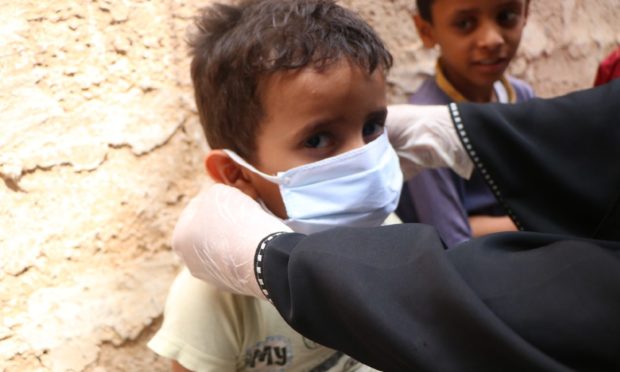As the anniversary of Covid-19 being declared a global pandemic nears, much of our focus in Scotland has centred on the dreadful effect of the pandemic on our young people.
Children today have had a turbulent year of repeated school closures, increased levels of anxiety, social isolation and grief from losing loved ones. It’s hard to comprehend that the youngest children have lived a fifth or more of their lives through the pandemic.
At least we can be thankful the virus doesn’t kill young children, as many past pandemics have. But what if I told you that thousands of children are dying as a result of Covid-19? This is the devastating truth, not here in Scotland, but in Yemen, a country in real crisis right now.
I’m not going to pretend Yemen was a safe place for children before the pandemic. Tearfund is a member of the Disasters Emergency Committee (DEC), who launched an emergency appeal in late 2016 as the effects of war left 17 million people without enough to eat.
Since then, fighting has continued and spread, and the situation has deteriorated. When the pandemic struck, 24 million people – almost 80% of the population – were already in need of humanitarian assistance. Around 50% of medical centres had been destroyed or closed due to the war.
But Covid-19 has magnified these existing problems, overwhelming the fragile health system and sending the battered economy into a tailspin.
An economic slump and rising inflation have made it impossible for families to find work and earn enough to pay for food as costs spiral, with no state safety net.
At the same time, overseas aid funding has faltered, and delivery has been complicated by added safety measures to prevent infections. Aid agencies face agonising decisions around which life-saving services to cut, while in some areas they find access blocked by continued fighting as a distracted world does little to facilitate the dormant peace process.
And the result? Multiple UN agencies have warned in a joint statement that 2.3 million children under the age of five – half of the total number in Yemen – will go hungry or starve in 2021.
Four hundred thousand are expected to suffer from severe acute malnutrition, which means they could die if not treated urgently. Covid-19 may not be killing Yemen’s children directly, but the hunger it causes will.
Yemen is the most fragile state in the world, with a broken health service and infrastructure devastated by war. But what is happening there is also happening in other countries with high levels of conflict and displacement. This is documented in an in-depth report published today by the DEC, which brings together 14 leading aid charities, including Tearfund, to quickly act together to raise money when disasters hit countries without the capacity to deal with them.
Breaking Point: How The Coronavirus Pandemic Will Push Fragile States Towards Catastrophe reveals that cases of and deaths from Covid-19 have been chronically underreported in fragile states; that their health services have been overwhelmed; and that the economic impact of the pandemic has left people unable to afford food and other essentials, leading to a very real prospect of famine in several countries.
Somalia, South Sudan, Syria, DR Congo and Afghanistan are all on the list of top 10 fragile states and sadly follow the same pattern as Yemen. Hunger is rising in all these places, but relief efforts supplying food and cash vouchers, and treatment in malnutrition clinics are being disrupted due to Covid.
Last July, the DEC Coronavirus Appeal for these six countries raised more than £3 million in Scotland. This generous support offered a lifeline to people in fragile states struggling to keep their families safe, but our colleagues bravely working on the ground tell us needs are now rising as funding from other sources declines.
A survey for the DEC report found 83% of senior aid workers agreed or strongly agreed that, without increased funding, thousands are likely to die from hunger in 2021 in these places.
I look at my own children and I’m thankful Covid-19 won’t cause them serious illness. But I cannot ignore the children in Yemen and elsewhere for whom the pandemic will be a death sentence. We can’t solve all the problems people in fragile states face, but we can help them through this moment of crisis and give children the chance to see a brighter tomorrow.
To donate to the DEC Coronavirus Appeal, visit www.dec.org.uk
Graeme McMeekin, head of Tearfund Scotland and spokesman for the Disasters Emergency Committee’s Coronavirus Appeal in Scotland
